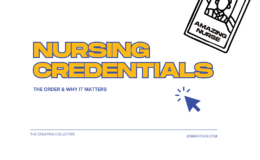In honor of National Wear Red Day:
The Article: Boo, S., Waters, C., & Froelicher, E.S. (2012). Coronary heart disease risk estimation in asymptomatic adults. Nursing Research, 61(1): 66-69.
Big Idea: This article discusses how to use the Framingham Risk Score (FRS) along with Bayes’ theorem of conditional probability to assess individuals’ 10-year risk of coronary heart disease when multiple tests and indicators are used in conjunction.
Quotable: “More than half of those who die suddenly of coronary heart disease (CHD) have no prior symptoms of the disease (Roger et al., 2011). Therefore, aggressive primary prevention for asymptomatic patients is crucial” (p. 66).
“Bayes’ theorem is a mathematical formula of conditional probability that is used to quantify the uncertainty about a hypothesis” (p. 67).
So What?: FRS is an involved mathematical equation, taking seven risk factors into consideration; you can actually calculate scores via a web-based calculator. The FRS is a good starting point to determine CHD risk. However, intermediate-risk individuals will need further testing, and Bayes’ theorem helps combine the subsequent test results into one risk score or category.





